每日观察:关注iOS与Android应用盈利性及用户留存率(6.27)
1)应用分析公司Localytics最近分析报告指出,iOS应用留存率高于Android应用;有22%用户仅开启一次应用就将其抛弃,这一比例略低于去年的调查数据(26%)。而开启应用超过10次的用户比例,则已从去年的26%上升至31%,访问量低于10次的应用比例占比69%(游戏邦注:其调查数据来自Localytics对6000万部移动设备上的用户监测情况)。
在这些开启应用超过10次的用户中,有35%是iPhone和iPad用户,而Android用户仅占23%。而在那些“一次性用户”群体中,Android用户占比24%,iOS用户占比21%。
尼尔森上个月报告显示,用户平均每部智能手机下载应用数量已从32款上升至41款,有88%的iPhone用户曾下载应用,而Android用户的这一比例为74%。
2)据gamasutra报道,Zynga日前宣布将于今年夏季推出Zynga with Friends游戏平台,面向第三方开放Zynga API,推出第三方游戏发行服务。另外据Zynga移动高管David Ko透露,Zynga手机游戏日活跃用户已达2200万。
Zynga with Friends平台整合了iOS、Android、Google+、QQ、Zynga.com和Facebook这些平台的社区/社交功能,包含Social Stream、聊天以及针对Zynga.com的同步多人游戏功能;其首航发行合作伙伴包括Crash Lab、Fat Pebble、Phosphor Games Studio和Sava Transmedia公司。
除此之外,Zynga还向媒体展示了一系列新游戏,其中包括《Zynga Elite Slots》、手机益智游戏《Matching With Friends》、类似于《模拟人生》的社交游戏《The Ville》、以烹饪为主题的《ChefVille》和继集游戏《FarmVille 2》。
3)据CNET报道,亚马逊计划于7月31日发布更高配置的Kindle Fire平板电脑产品。
这款Kindle Fire 2平板电脑将添加摄像机和实体音量按钮功能(这是用户对原Kindle Fire设备的不满之处),但亚马逊并未透露该设备是否将采用性能更好的处理器,蓝牙连接或者更高内存等设置,但台湾媒体DigiTimes报道称Kindle Fire 2将采用更高像素的屏幕。
DigiTimes还指出Kindle Fire 2正式发布时,亚马逊将把原来的Kindle Fire售价降至150美元。
4)Pew Internet & American Life project最新调查报告显示,虽然手机是用户上网的便捷工具,但仅有17%美国成人手机用户(包括功能性手机用户)使用移动设备上网的频率高于用台式电脑、笔记本或平板电脑。
而在那些已使用手机上网的用户(占比55%)中,有31%受访者表示自己多数时候是用手机上网;18-29岁群体的这一表现尤其明显,有45%受访者多数时候使用移动设备浏览网页。非洲籍和拉美籍美国人也属于这种典型,这两者更经常使用手机上网的用户比例分别为55%和52%,而白人美国人的这一比例仅为24%。从学历和家庭收入来看,家庭收入低于5万美元以及未获得大学文凭的群体,更经常使用手机上网。
64%用户表示用手机上网更方便,有18%称这种上网方式更符合自己的习惯,有7%表示手机已经可以满足自己的基本网络活动需求,还有些人认为这是一种更简单的上网方式。
但也有10%用户称自己除了手机没有其他上网途径,其中有6%称自己没有电脑,有4%称移动网络就是自己唯一的上网渠道。
5)旧金山手机游戏公司TinyCo最近发布报告指出,设计良好的Android手机游戏用户盈利性与留存率有可能赶超iOS平台。
据其报告所称,TinyCo游戏《Tiny Village》在iOS和Android两个平台的ARPPU(每付费用户收益)数值相同,预计未来数周Android平台的ARPPU将再提升25%-40%;用户在游戏中的留存时间越长,就越有可能转化为付费用户。
TinyCo称《Tiny Village》的Android用户第7天留存率比iOS用户高7%,他们将继续优化用户体验以提高付费转化率,并指出将针对iPhone版游戏整合Facebook社交功能。据其所称,使用赠礼、邀请和其他Facebook功能的用户盈利性比普通用户高138%,并且其付费转化率也比非Facebook用户高60%。
6)据pocketgamer报道,中国手机制造商小米虽然目前仅推出一款智能手机,但其公司估值已经接近加拿大制造商RIM,该公司成立仅两年,近期在第三轮融资中筹得2.16亿美元,目前估值已达40亿美元,而RIM目前市值约47亿美元左右。
(本文为游戏邦/gamerboom.com编译,拒绝任何不保留版权的转载,如需转载请联系:游戏邦)
1)Apps get better at retaining users, iOS more than Android
By Ryan Kim
App users are a flaky group, easily discarding apps in favor of the hot new thing. But new data suggests they are developing more loyalty toward apps, abandoning them less frequently and visiting their favorite apps more often, according to app analytics firm Localytics, which also found that iOS apps have better retention rates than Android.
App users are now abandoning apps after using them just once at a rate of 22 percent, down from 26 percent when Localytics first looked at retention rates last year. And for users who open an app more than 10 times, that figure has gone up from 26 percent to 31 percent. That suggests that app makers may be figuring out how to better encourage engagement and long-term use, rather than shooting for quick downloads.
That’s been one of the big changes in the app ecosystem, as app makers realize it’s better to retain users than push for big download numbers, which can be easily inflated. It may also be a result of the fact that many of the tools for incentivizing downloads have been blocked by Apple. That may also partially explain why iOS apps perform better than Android apps in retention.
Localytics found that among heavy users opening an app more than 10 times, 35 percent are iPhone and iPad users while 23 percent are Android users. For one-time users, Android apps also see 24 percent of their users abandon the app, while 21 percent of iOS users leave after one time. The company examined the behavior of app users on 60 million devices, comparing a nine-month period that ended in March 2012 with a previous nine-month period ending in March of 2011.
The year-over-year improvement in retention may be a result of app makers getting better at building apps, said Localytics. Users might also be more discerning about which apps to try. Also, users are downloading more apps overall, according to Nielsen, which reported last month that the average number of apps per smartphone has increased from 32 apps to 41.
As for Apple’s loyalty advantage, Nielsen also found that 88 percent of iPhone users are app downloaders while 74 percent of Android users are, another reason why retention may be better on iOS. Localytics’ CEO also told The Wall Street Journal that iOS apps may also be more polished because they’re the primary target for many app developers. iOS devices also enjoy higher customer retention compared to other smartphone makers.
There are still plenty of challenges for app makers. The numbers show that 69 percent of the time, an app doesn’t get opened more than 10 times. But for app makers, it’s clear that you need to continue to build for repeat usage and long-term engagement. With most of the monetization models for apps based on in-app purchase or advertising, it’s all about keeping people coming back to the app. The fact that people are returning to apps more often is an encouraging sign considering that the deluge of new apps is not slowing down. Maybe app users aren’t as flaky as we thought.(source:gigaom)
2)Zynga with Friends platform unveiled alongside third-party API
by Eric Caoili
Zynga has announced several major initiatives for its social games going forward, including its Zynga with Friends community platform for its titles, Zynga API for third-party developers, and a number of new games.
During a Gamasutra-attended press event on Tuesday morning, the firm said it will allow external developers to tap into its technology through Zynga API. This will enable studios to take advantage of the infrastructure and services Zynga has built up over the years to support its social game empire.
It revealed three new partners developing games for the standalone Zynga.com site: 50 Cubes, Majesco, and Portalarium. The trio joins a growing list of third-party developers creating games for the platform like Konami, Mob Science, Rebellion, and Row Sham Bow.
The company then unveiled Zynga with Friends (not to be confused with the Zynga with Friends studio, formerly Newtoy), an Xbox Live-style service for the company’s games that unifies community/social features across multiple platforms: iOS, Android, Google+, QQ, Zynga.com, and Facebook.
Zynga With Friends is designed to serve as a single social lobby for all of the company’s titles, with features like a live Social Stream, chat, and a new synchronous multiplayer feature for Zynga.com titles that allows users to challenge each other in head-to-head competitions.
As for its smartphone plans, the company has started a Zynga Partners for Mobile program that will begin releasing titles for the Zynga With Friends network this summer. Early partners include Crash Lab, Fat Pebble, Phosphor Games Studio, and Sava Transmedia. Atari is developing a game for the platform that celebrates the 40th anniversary of a particular franchise (likely Pong), too.
The social game giant also debuted a number of new titles like Zynga Elite Slots, mobile puzzler Matching With Friends, The Sims-esque social game The Ville, cooking-themed game ChefVille, and FarmVille 2, the last of which is a sequel to one of Zynga’s first and biggest hits. (source:gamasutra)
3) Kindle Fire 2 will light a blaze in the next few weeks, report says
Sean Ludwig
Amazon plans to launch a better-equipped successor to its Kindle Fire tablet on July 31, according to a report by CNET.
Although, frustratingly, Amazon has not said how many Kindle Fires it has sold, the company claims it’s the best-selling, most-gifted, and most-wished-for product it has sold since its November launch. The $200 tablet has attracted the attention of big-name brands like HBO and Zynga, and companies’ willingness to make a Kindle-Fire-compatible Android app shows that the device has a fair amount of traction. Launching a more-powerful and better-featured second-gen Fire at the same $200 price point would help get even more folks on board, though some might be tempted by Google’s Nexus 7 tablet.
CNET claims that the Kindle Fire 2 will add a camera and physical volume buttons, two things users complained about with the first model. There’s no word on whether the device will get a better processor, Bluetooth connectivity, or more on-board storage than the Fire’s 8GB. Additionally, Taiwanese publication DigiTimes claims that the Fire 2 will feature a higher-resolution 1,280-by-800-pixel display.
DigiTimes also suggests that once the Kindle Fire 2 launches, Amazon will lower the price of the first Kindle Fire to $150. We’ll most likely see the e-ink Kindles get refreshed at that time as well. With Barnes & Noble’s latest Nook including GlowLight, we expect the next Kindle line will have at least one model with an integrated light, too.(source:venturebeat)
4)Pew: 17% Of U.S. Cell Phone Users Now Mostly Use Their Phones To Go Online
Frederic Lardinois
For most of us, our cell phones are now a convenient way to get online while we’re on the go (or on the couch). According to a new report by the Pew Internet & American Life project. However, 17% of U.S. adult cell phone owners now go online using their phones more than their desktops, laptops or tablets. That’s the number for all cell phone owners in the U.S, including those with feature phones. Just looking at those who already use their phones to go online (55% of all cell phone owners), a whopping 31% now say they mostly use their phones to go online.
For young adults (18-29), those numbers are even here. Here, the Pew study found that 45% of those who use the Internet on their phones do most of their web browsing on their mobile devices. There are also some demographic differences here, with more African-American and Latino users falling into the “cell-mostly” category (55% and 52% compared to 24% for whites). Income and education, too, seem to play a role here, as respondents living in households with an income of less than $50,000 and those who didn’t graduate from college being more likely to report that their phones are their only way of getting online.
Asked about why they prefer to use their phones instead of laptops and desktops, these users said that they are more easily available (64%), fit their usage habits better (18%) and are simply good enough to perform basic online activities (7%). For some, phones are also simply easier to use.
There is, however, also a large group of users who simply don’t have any other means of getting online (10%). For some (6%), that’s because they don’t own a computer and for others (4%), their mobile connection is simply their only source of Internet access.(source:techcrunch)
5)Paying players spend more on Android than iOS, reports TinyCo
by Keith Andrew
Numbers published by San Francisco-based outfit TinyCo suggest both user revenue and retention rates on Android are starting to surpass high watermarks previously set by iOS.
As detailed in the firm’s new quarterly reports package, TinyCo claims games tailored for Android are starting to outperform their iOS equivalents when it comes to average revenue per paying user (ARPPU) – especially in the case of Amazon’s Kindle Fire.
Revenue raiser
“In our game Tiny Village, ARPPU on iOS and Android are the same, and later in the product lifecycle we are seeing weeks where ARPPU can be between 25 percent – 40 percent higher on Android,” stated TinyCo in its report.
“This will shrink as more players become payers on Android – as platform experience improves – and hopefully the overall balance of a average revenue per user (ARPU) and ARPPU begin to look closer on each platform.”
Key to Android’s ascent, however, has been a rise in the seven day retention rate.
As TinyCo points out, the longer a customer can be kept on board, the more potential there is for converting them into paying players.
Stay and play
“In Tiny Village, we are now seeing on average over 7 percent higher day-seven retention on Android over iOS,” the firm concludes.
“With constant optimisation we’ve increased retention on Android to higher levels than iOS, and we are seeing higher ARPPU. Our next challenge will be to continue to optimise the user experience as best as possible to increase conversion.
“With user satisfaction continuing to evolve, and better store experiences on the way, we are very bullish about the future of the Android platform and Google Play.”
Facing up to Facebook
In regards to iPhone, TinyCo notes the next frontier for developers will be better integrating Facebook into their titles, with iOS 6 building elements of the social network into its very heart.
Though its own experiences with Facebook are currently limited, the firm claims players engaging with simple measures such as gifting, invites and other Facebook features monetise 138 percent higher than normal paying users.
Said users are also more than 60 percent more likely to be paying users than non-Facebook players.(source:pocketgamer)
6)With just one smartphone on sale, Chinese OEM Xiaomi already rivals RIM in terms of value
by James Nouch
Despite having launched just one smartphone to date, a valuation of Chinese manufacturer Xiaomi has suggested the company is already almost equal in value to Canadian giant RIM.
The assessment was triggered by a $216 million funding round, with the sum effectively valuing the two-year old company at $4 billion.
By comparison, the BlackBerry manufacturer’s market cap currently sits at around $4.7 billion.
Low-cost high-end
Xiaomi co-founder and CEO Lei Jun has so far declined to reveal who was involved in what was the company’s third funding round, though previous rounds have been led by by IDG and Morningside respectively, securing a total of $131 million.
To date, Xiaomi has brought just one smartphone to market – the MI-One. The handset boasts a dual-core Snapdragon S3 and an Adreno 220 GPU, coupled with a relatively low price-tag.
The device has proved extremely popular since launch. Xiaomi has sold 70 million MI-One handsets so far, and generated more than $157.1 million in revenue. Lei Jun’s announcement also pegged the company’s profits at $15.7 million to date.
Looking ahead, Lei Jun has claimed “copying Apple is no way to go”, suggesting a move on mobile commerce could be a possible avenue for the company to explore in the years ahead.(source:pocketgamer)

























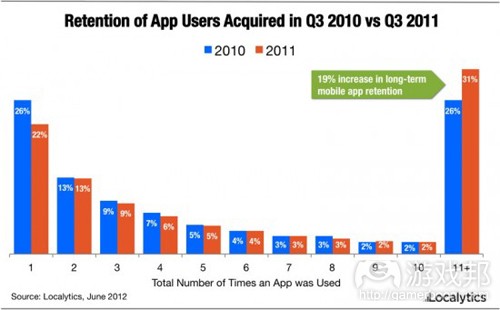
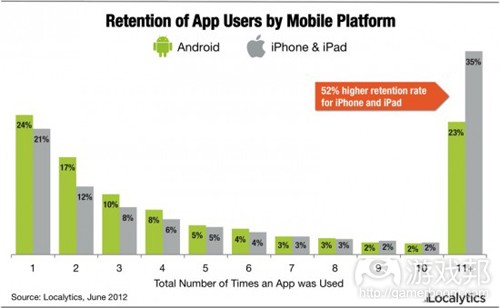
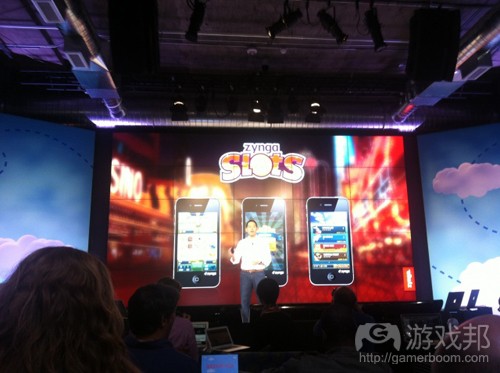


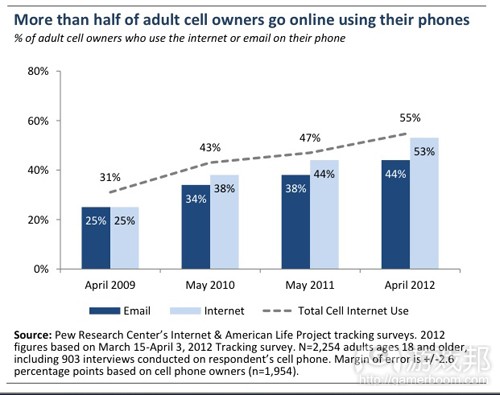
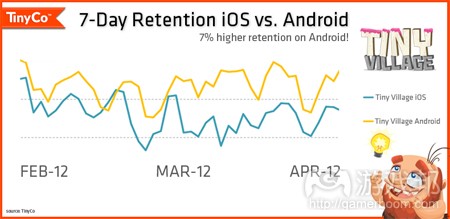
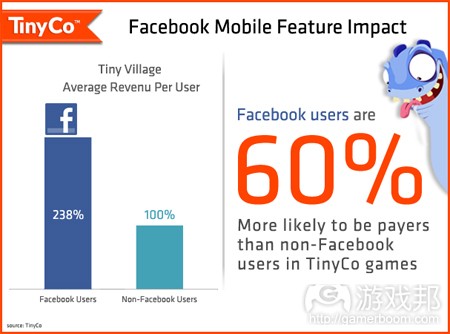
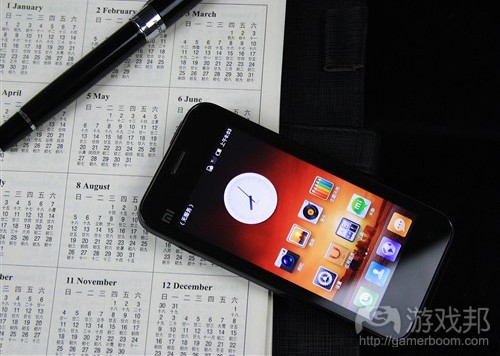














 闽公网安备35020302001549号
闽公网安备35020302001549号